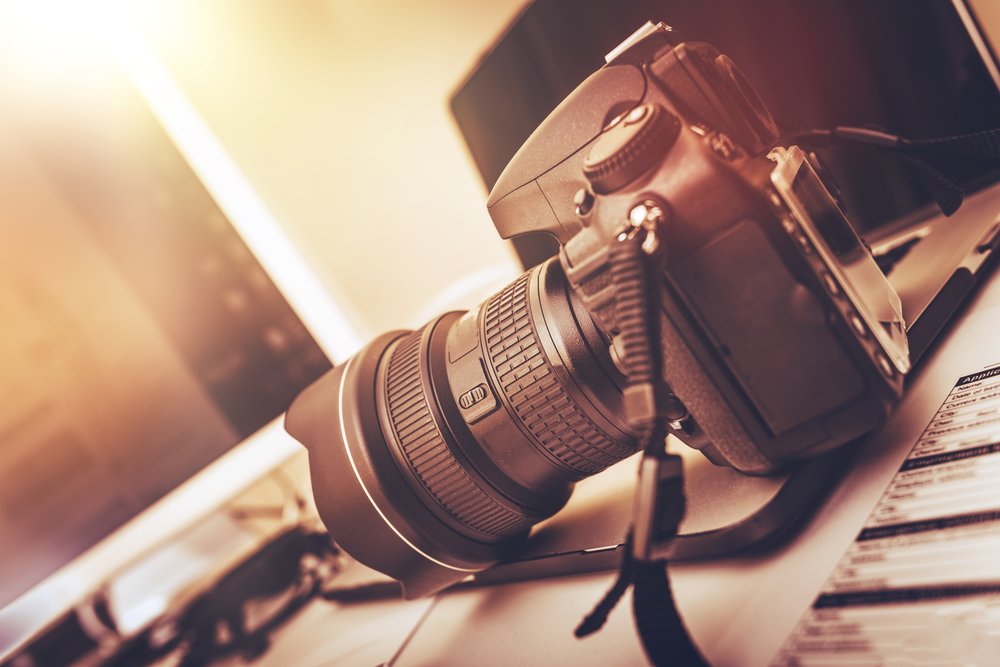In the world of video production, it’s easy to get bogged down in the ocean of products and programs available in the Digital Age. Whether you’re just starting out or are an industry veteran, using these tools will prepare you for any project.
1. Affordable Camera
Searching for a quality camera that’s also reasonably priced can be a daunting task. Luckily, there are several options for low-budget filmmaking that won’t clean out your savings account. The Canon Rebel T5i provides professional quality at an unbeatable price.
SLRs – or single-lens reflex cameras – are built with a large light-capturing sensor that allows them to function better in low light. This sensor gives them a shallow depth of field for creative focus shot selection. Purchasing a SLR camera also gives you a wide variety of high-quality lens options. Adaptors are also available to fit alternative lens brands to your SLR, ensuring you can accomplish any type of shot.
2. Lenses
Choosing the right lens is an art in itself. Learning which lens provides the look and feel needed for each shot is a learning process all beginners experience. If there are too many lens options it can slow down production, so it’s better to start with the basics: a 50mm lens, a wide-angle lens, and a medium telephoto lens. These three options allow creative freedom without the burden of endless options for each shot.
A 50mm, or standard, lens function as a natural view and perspective. They function best in a cowboy shot and mid range shots, yet do not offer a clear close up. They are small and compact not necessitating a tripod.
A wide-angle lens is utilized best for shooting a master shot and working in small spaces. Offering a strong perspective they handle a wide range of depth of field, yet struggle with close ups.
Finally, the medium telephoto lens is the shortest among the lenses that will give an undistorted closeup. They perform well in low light but are quite hard to handle without a tripod, so some kind of tri or monopod is recommended. Check out the Canon website for their selection of lenses.
3. Tripod
While a growing majority of creators and directors of photography are moving towards a handheld-centric style of filmmaking, the professional quality of a steady and beautifully framed shot owes primarily to the tripod.
When choosing a tripod, you’ll want one with a wide range of heights. Some tripods only raise up to eye level, so it is important to find one that meets your height needs. Additionally, having a fluid head allows for smooth pans and movement. Quick release plates are also preferred for quick setups and takedowns. Tripods by Manfrotto are a good beginning model as you learn what your specific needs will be.
4. Lights
An important basic skill for beginning filmmakers is learning to work with natural light, but sometimes you need something more substantial for that perfect shot. Unlike cameras – where the overlap in functionality is wider – each light and lighting kit has its own specific purpose. When working with lights, there are two principles you can look at: generating light and shaping it.
The most necessary tools when shaping light – natural or otherwise – are reflectors and diffusers. Buying a 5-in-1 reflector should cover the majority of your shaping needs, as it comes with a diffuser, as well as white, gold, and silver reflectors. There is also a black side to “flag” and block out light.
When it comes to generating light, there are two main options of bulbs: Tungsten or LED. Tungsten lights are strong, but also costly. Because of the amount of power they output they require a power source, which potentially means more cost and time consumption when using them. However they’re still the overall preferred choice for professionals, so buy at your own discretion. LED panels don’t generate nearly as much heat as a Tungsten bulb and can also be run off of batteries, making it more portable and faster to setup.
Lastly, a good lighting stand is required for Tungsten lighting because their bulbs reach dangerously hot temperatures. Unless you have some extra hands on your production crew to hold diffusers and LED lights, you’ll need lighting stands for those as well.
5. External Sound Recorder
If you chose to go with the SLR mentioned at the top of the article, than you’ll most likely need a separate recorder/mixer to pair with it. Luckily for you, the TASCAM DR-60D Mk II is built for that exact purpose. While it doesn’t have a built in microphone, it does allow for four microphone inputs with a four-track recording mode. From there, you have to decide what type of microphone best fits your needs. For more helpful information on microphones, check out Micreviews.com.
6. Video Editing Software
Once you’ve finished shooting your video, you’ve moved into what will hopefully be the final phase of production: video editing. There’s a wide range of quality editing software available for both Mac and PC systems. Both PC and Mac have free or bundled options – such as iMovie for Mac – but if you’re looking for a professional and expansive editing program, Adobe Premiere Pro is a fantastic option.
If you’d like to test out a range of Adobe products, Adobe Creative Cloud is available for affordable monthly payments. This will give you the freedom to try different options, like Adobe After Effects, and decide which best delivers your creative vision.
While it is nice to posses the latest in video production gear, it is not a requirement for success. Trusting your creative instincts and relying on the fundamentals will allow you to be successful with any level of technology.

Josh Shockley, M.A.
Since cranking out the very first NextThought video, Joshua has been a dynamic force in every creative decision related to NextThought Studios. With a background in documentary production, Joshua has received multiple awards from his science and weather-themed productions. Joshua leads the creation of design and style for our videos, and he serves as a collaborator on every project we undertake. His skill with Adobe After Effects is unparalleled, and NextThought’s graphics are a testament to his creativity. Additionally, Joshua helms a wildly popular gamers’ webcast that publishes almost daily.
Recent Posts

The 6 Best Educational Video Production Companies (2024)
April 2, 2024 9 Min Read

What is Microlearning? 9 Benefits and Examples
March 14, 2024 5 Min Read

What is Educational Video Production? How and why it works.
February 29, 2024 6 Min Read


